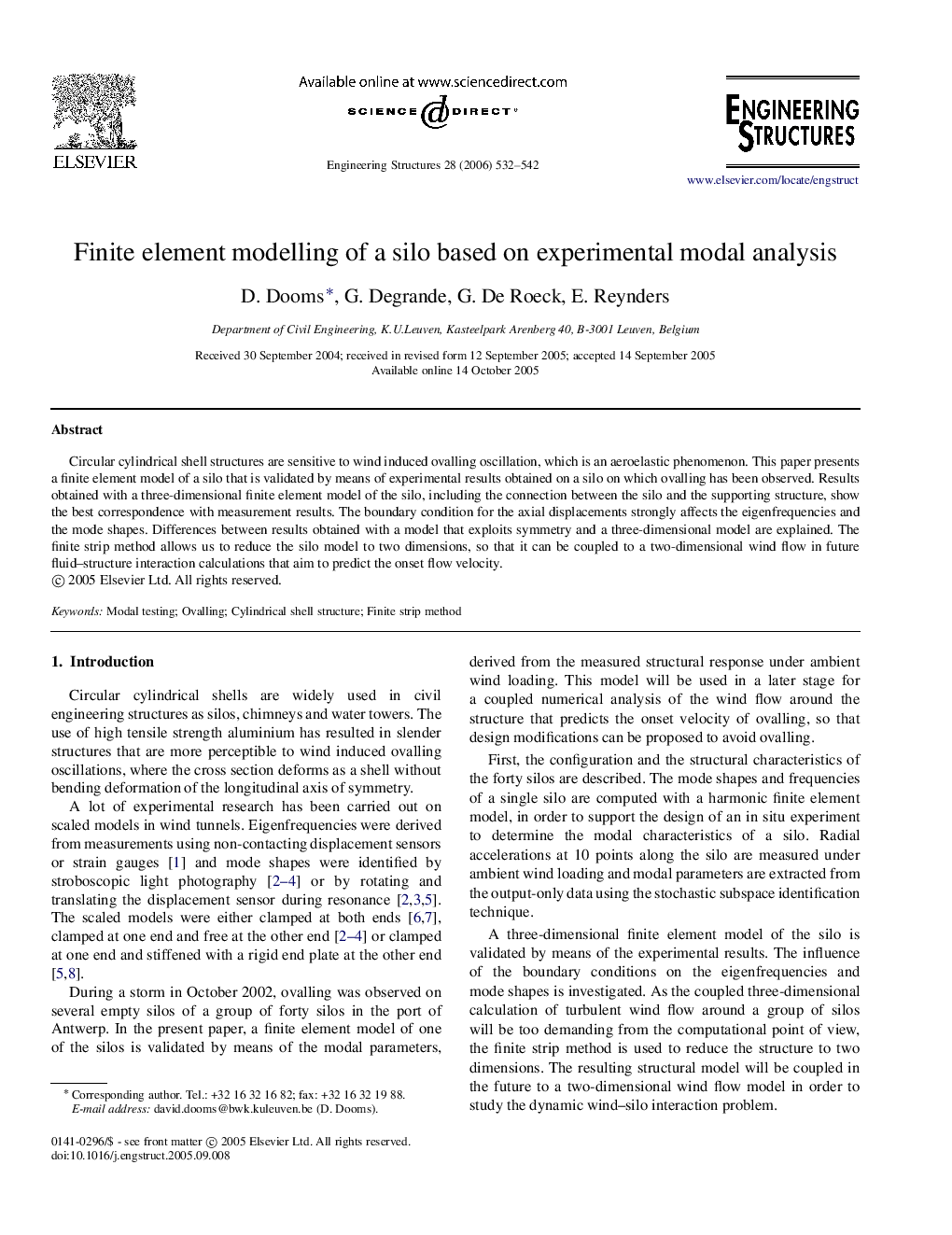| Article ID | Journal | Published Year | Pages | File Type |
|---|---|---|---|---|
| 269619 | Engineering Structures | 2006 | 11 Pages |
Circular cylindrical shell structures are sensitive to wind induced ovalling oscillation, which is an aeroelastic phenomenon. This paper presents a finite element model of a silo that is validated by means of experimental results obtained on a silo on which ovalling has been observed. Results obtained with a three-dimensional finite element model of the silo, including the connection between the silo and the supporting structure, show the best correspondence with measurement results. The boundary condition for the axial displacements strongly affects the eigenfrequencies and the mode shapes. Differences between results obtained with a model that exploits symmetry and a three-dimensional model are explained. The finite strip method allows us to reduce the silo model to two dimensions, so that it can be coupled to a two-dimensional wind flow in future fluid–structure interaction calculations that aim to predict the onset flow velocity.
